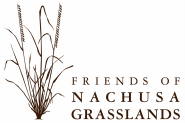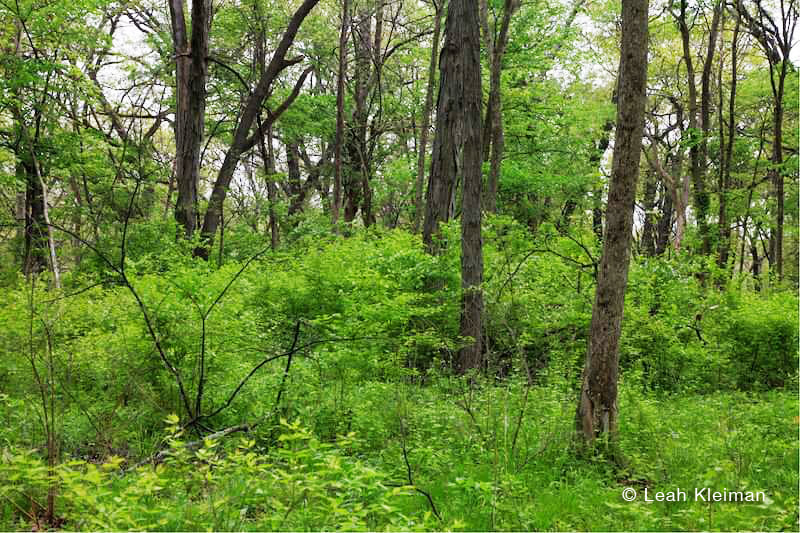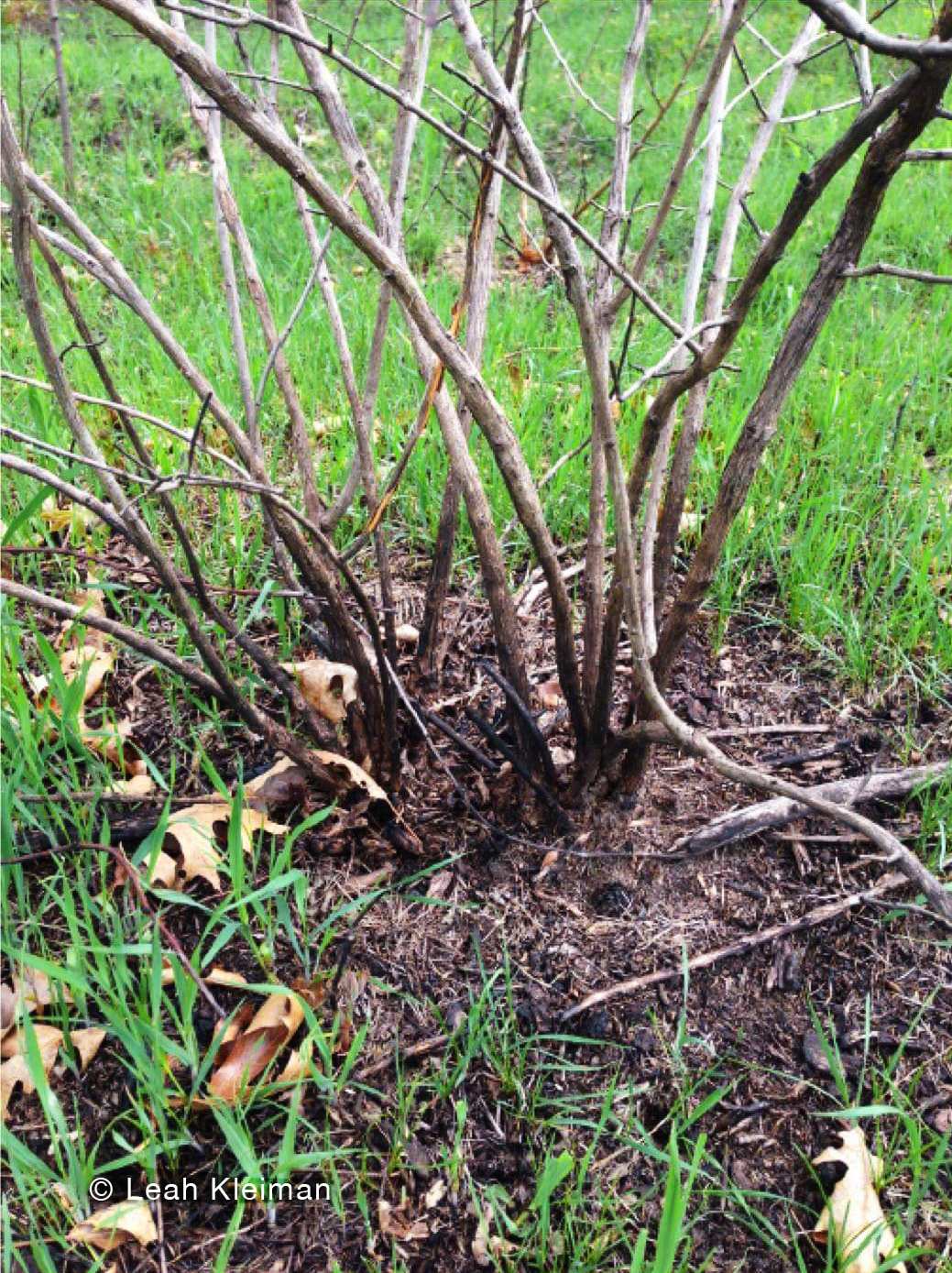|
By Leah Kleiman Amur honeysuckle (Lonicera maackii) is a perennial shrub native to temperate Asia and is invasive in the Midwestern United States. It now infests many savannas and woodlands and is difficult to eradicate. Bill and Susan Kleiman and I are co-authors of a study recently published in the journal Ecological Restoration, titled “The Successful Control of Lonicera maackii (Amur honeysuckle) with Basal Bark Herbicide” (http://er.uwpress.org/content/36/4/267.full.pdf+html). Our study looked at the efficacy of basal bark application, where a mineral oil solution of herbicide is sprayed in a 6-inch band on the bark without cutting the plant. Our study found 100% mortality with basal bark treatment. A variety of other treatment methods are used to battle honeysuckle. Manual pulling works well on small individuals in soft ground, but becomes impossible with larger sizes. Cutting and treating the stumps with herbicide is effective, but very time-consuming. We recommend the cut-and-treat method for sensitive high-quality areas. A foliar spray of herbicide is effective and efficient, but will have much more off-target damage and can only be used in the growing season. Fire is a useful tool in keeping brush at bay, but it will only top-kill shrubs. The basal bark method is efficient, effective in all seasons, and has minimal off-target damage. Some things to keep in mind: 1) Re-treating is important for success. One treatment is not enough. Some shrubs will inevitably be missed, and yearly recruitment will occur until the seedbank is exhausted. 2) Honeysuckle treated in the dormant season may still leaf out and die later in the growing season. So if you notice this, it does not mean that your treatment has failed, but rather that you need to check back at a later date (typically late summer/fall). Our study concludes that basal bark treatment paired with regular fire is the optimal way to eradicate honeysuckle invasions. For more information on treating honeysuckle with basal bark, see the February 3, 2019 blog post “A Study on Controlling Amur Honeysuckle (Lonicera maackii)” by Kaleb Baker.
0 Comments
Your comment will be posted after it is approved.
Leave a Reply. |
Blog CoordinatorDee Hudson
I am a nature photographer, a freelance graphic designer, and steward at Nachusa's Thelma Carpenter Prairie. I have taken photos for Nachusa since 2012. EditorJames Higby
I have been a high school French teacher, registered piano technician, and librarian. In retirement I am a volunteer historian at Lee County Historical and Genealogical Society. Categories
All
Archives
January 2024
|
CONNECT WITH US |
|





 RSS Feed
RSS Feed